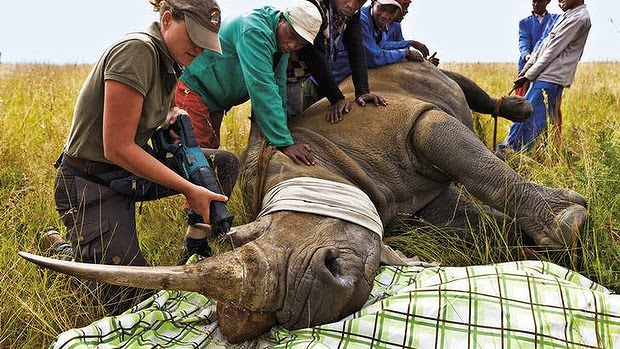In line with resolutions reached at the 17th meeting of the Conference of the Parties (CoP17) to the Convention on International Trade in Endangered Species of Wild Fauna and Flora (CITES) held in 2016 in South Africa, Parties are to take an inventory of existing elephant ivory, rhino horn.

CITES in a recent directive requested countries to mark elephant ivory tusks and cut pieces, and submit an inventory of government and private stocks to its secretariat.
Similarly, countries with stocks of rhinoceros (or rhino) horn have been asked to identify, mark, register and secure such stocks, and declare to CITES.
Deadline for both declarations is Wednesday, February 28, 2018. The exercise is a yearly affair.
“The purpose of the present Notification is to remind Parties that Resolution Conf. 9.14 (Rev. CoP17) on Conservation of and trade in African and Asian rhinoceroses contains, among other provisions, a recommendation urging all Parties that have stocks of rhinoceros horn to identify, mark, register and secure such stocks, and declare these to the Secretariat each year before 28 February, in a format to be defined by the Secretariat.
“The Resolution also inter alia urges the Secretariat and other appropriate bodies, where possible, to assist Parties that have stocks of rhinoceros horn with the control of stocks, by providing them technical advice and relevant information,” CITES disclosed in a notification for “Declaration of stocks of rhinoceros horn”.
In the other notification titled: “Elephant ivory stocks: marking, inventories and security”, CITES reminded Parties that Resolution Conf. 10.10 (Rev. CoP17) on Trade in elephant specimens contains, amongst other provisions, a recommendation to mark elephant ivory tusks and cut pieces, and they should submit an inventory of government-held ivory stock and significant privately held ivory stocks, and the reasons for any significant changes in the stockpile compared to the preceding year.
The request to submit an inventory, says CITES, is directed to “Parties in whose jurisdiction there is an ivory carving industry, a legal domestic trade in ivory, an unregulated market for or illegal trade in ivory, or where ivory stockpiles exist, and Parties designated as ivory importing countries”.
Parties are also invited to include a summary of information on the ivory stocks disposed of during the year 2016, in particular the volume of raw and worked ivory and how it was disposed of.
In both scenarios, CITES provided a model table that can be used by Parties for reporting their inventory of ivory and horn to the Secretariat.
Nigeria is a signatory to the CITES.
